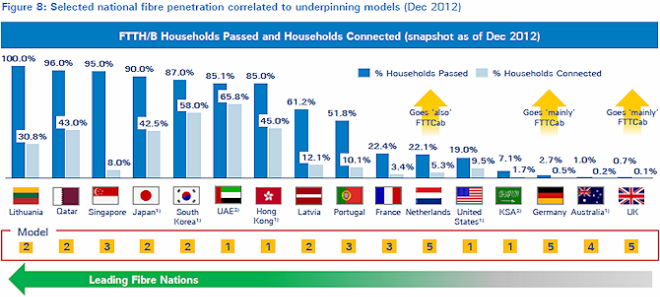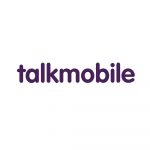Arthur D. Little Says UK Could Adopt Ultrafast FTTH Broadband in 5 Years
Management consultancy giant Arthur D. Little has published a new paper that examines the importance of investing in better telecoms infrastructure. It also predicts that the UK might need to adopt ultrafast (100Mbps+) fibre optic FTTH broadband “over the next five years“, unless G.Fast is realised to expand the life of FTTC.
The paper identifies five strategic models for National Fibre deployments that have been implemented by countries around the globe, and assesses which of these models are most likely to fulfil National Fibre goals to the benefit of all stakeholders, including governments, regulators and policy makers.
Advertisement
In particular it notes that investment in faster fibre optic based broadband solutions (FTTC/H/B/P/N etc.) can help to support economic growth, although in order to reach everybody the report also recommends the need to support a truly “fair and open approach” to regulation and the use of state aid (public funding).
Recommendations for Successful National Fibre Strategies
* Reduction of regulation pressure in order to create a more investment-friendly environment by introducing new remuneration and wholesale pricing mechanisms.
* Maintenance of cross-operator competition in fibre deployments in economically viable areas in return for an absence of regulation.
* A publically-initiated fair and open orchestration of those operators in second- and third-tier areas where free-market economics can be extended with modest conditions, such as reciprocal open access between operators.
* A publically-initiated, fair and open approach with a combination of public and private funding directed to coordinated fibre build in those least economically attractive areas – again with appropriate conditions to ensure reciprocal access and the prevention of internal cross-subsidy that would otherwise distort or reduce competition in super-fast services.
Generally speaking the paper appears to be a strong supporter of true fibre optic solutions like Fibre-to-the-Home (FTTH/P/B), which except for a few projects and the super-expensive FTTP-on-Demand (FoD) solution, has been largely shunned in the United Kingdom. But it may not always be so.

Instead of FTTH/P/B solutions the UK has gone for a hybrid-approach that makes use of the country’s existing copper and coax based telecoms infrastructure. For example, Virgin Media’s 120Mbps capable “cable” (EuroDOCSIS 3.0) network covers around half of the country and is a mix of copper, coax and fibre optic (FTTN if you prefer). Likewise BT’s dominant Fibre-to-the-Cabinet (FTTC) service offers speeds of up to 80Mbps using a mix of fibre optic cable to your local street cabinet and “last mile” copper into homes.
The paper in fact suggests that this sort of “multi-tiered, hybrid approach that differentiates between infrastructure and service-level competition” makes economic sense for some markets, such as the United Kingdom, though it will be more difficult to decide what comes next.
Advertisement
Arthur D. Little’s Paper said:
“Each example of the various National Fibre models is unique. For example, the UK, due to its relatively compact geography and proud, 100-year history of significant network investments, has a good copper- and coax-based access network. The country enjoys a high proportion of fast broadband (circa 50 percent of homes have access to 50 Mbps or greater). This situation has impacted the timing and reduced the pressure to move fully to fibre solutions.
This gradual approach has also been adopted in other countries where cable and FTTCab address the need for increased connection speed with limited marginal costs, and enable further enhancements to be implemented over time. However, 50 Mbps will rapidly be seen as modest, and the need to move to FTTB/H may be approaching over the next five years.”
However those expecting BT in the UK to suddenly switch course and go down the full fibre path should take note that the same paper also states that “countries with a very strong copper infrastructure” may see a “further life extension” through new technologies like G.Fast. Indeed we recently reported that one of these solutions, FTTC/VDSL Vectoring, is already set for a summer 2013 trial in two locations (here).
By comparison G.Fast, which is another technology that BT are known to be testing in their labs, has the potential to extract speeds of up to 1Gbps (1000Mbps) from the operators FTTC service. The caveats for this are that you’d need to live within 100 metres of your local street cabinet (falling to around 500Mbps within 200 metres) and G.Fast wouldn’t be a cheap upgrade, which is due to the need for new hardware. Never the less BT does have G.Fast on its list but it won’t be coming for a few years.
Mark is a professional technology writer, IT consultant and computer engineer from Dorset (England), he also founded ISPreview in 1999 and enjoys analysing the latest telecoms and broadband developments. Find me on X (Twitter), Mastodon, Facebook, BlueSky, Threads.net and Linkedin.
« UK ISP Direct Save Telecom Offers Unlimited Broadband from £1.95


















































Comments are closed